When driving to the Visitor Center, be sure to pull over at the Frijoles Canyon Overlook. Over 1M years ago, two massive volcanic eruptions occurred (each 600 times more powerful than the Mount St. Helens eruption in 1980). Hundreds of feet of ash were compressed into a soft rock called tuff. The canyon was carved by the waters of Frijoles Creek. Native Americans were able to build dwellings into the canyon walls. The Pajarita Plateau (in the far distance) was home to Native Americans from Ice Age hunters (10,000 years ago) to pueblo dwellers (800 years ago).
The Civilian Conservation Corps (CCC) built the road, trails, visitor center and lodge at Bandelier in the 1930s. Thank you and well done! We are continually amazed (and appreciative) of the great work they accomplished for our country. The Visitor Center should be your first stop to pick up a map and check out the exhibits. Unfortunately, pets are not permitted on the trails.
Exhibits in the visitor center provide background on the cultural history of the site.
A model of Tyuonyi (the pueblo built here in the 1200-1300s) was on display and provided context to the nearby ruins.
We picked up a trail guide (nominal fee) for the 1.2 mile, Main Loop Trail to Tyuonyi and cave dwellings. I was immediately mesmerized by “Swiss cheese” rock formations.
As we began walking the trial, we saw the Frijoles Creek (that provided water for the community) and, in the distance the ladder to some of the cliff dwellings.
The trail goes through the Tyuonyi ruins including a kiva and foundation ruins.
Climbing the steps to the cave dwellings, we were able to sit inside some of them. Evidence of long-ago fires could be seen in the small caves.
From the cave dwellings, we had a great view of the ruins of Tyuonyi.
The trail continues to provide access to cave dwellings. I couldn’t resist climbing through them to imagine what it must have been like to live here so long ago.
The trail continues up narrow steps and a ladder to more cave dwellings.
Structures, sometimes several stories high, were built against the cliff caves and walls.
In addition to the hand-toe holds in the cliff walls, we began to notice petroglyphs above the dwellings.
Native American wall art is preserved behind this plexiglass panel (very cool!) Other cave dwellings also have remnants on their walls.
We crossed the creek and continued on the 1-mile, round trip hike, to the Alcove House. The trail follows the creek through the bottom of Frijoles Canyon. More cliff dwellings can be seen in the distance. Serious flooding in recent years is evident along the canyon floor.
After a .5 mile, we came to Alcove House, 140’ above the canyon floor. To reach the alcove, there are four ladders and stone steps against the cliff wall (with railings, thankfully).
There is a reconstructed kiva (where the original one was located) and viga holes and niches of former houses. About 25 people lived here.
As you can imagine, the views from the alcove were fantastic.
While descending to the valley floor, I could not help thinking about the Ancestral Puebloans who carried food, supplies, babies, etc., to their lofty home every day. Wow! We hiked back to the Visitor Center along the trail that follows Frijoles Spring.
We drove to the Cottonwood Picnic Area to eat our lunch. The wooded area has picnic tables next to parking spaces. Dogs are not permitted on paths, but our Sadie enjoyed some play time during lunch.
We found this place so interesting! I would highly recommend a visit if you are in the area. Seeing these cliff dwellings up close is such a rare treat. For additional information about the monument, go to www.nps.gov/band.



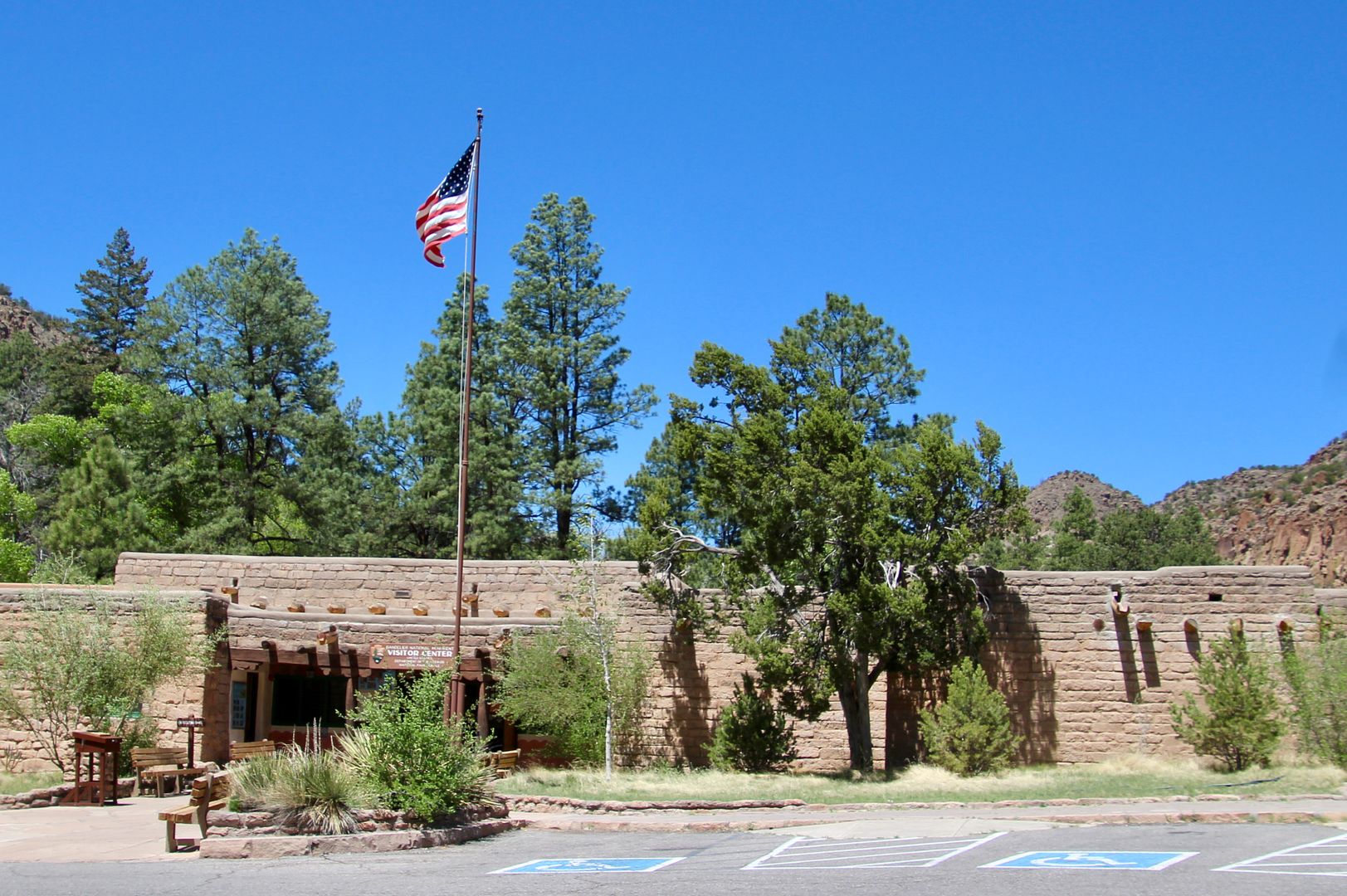
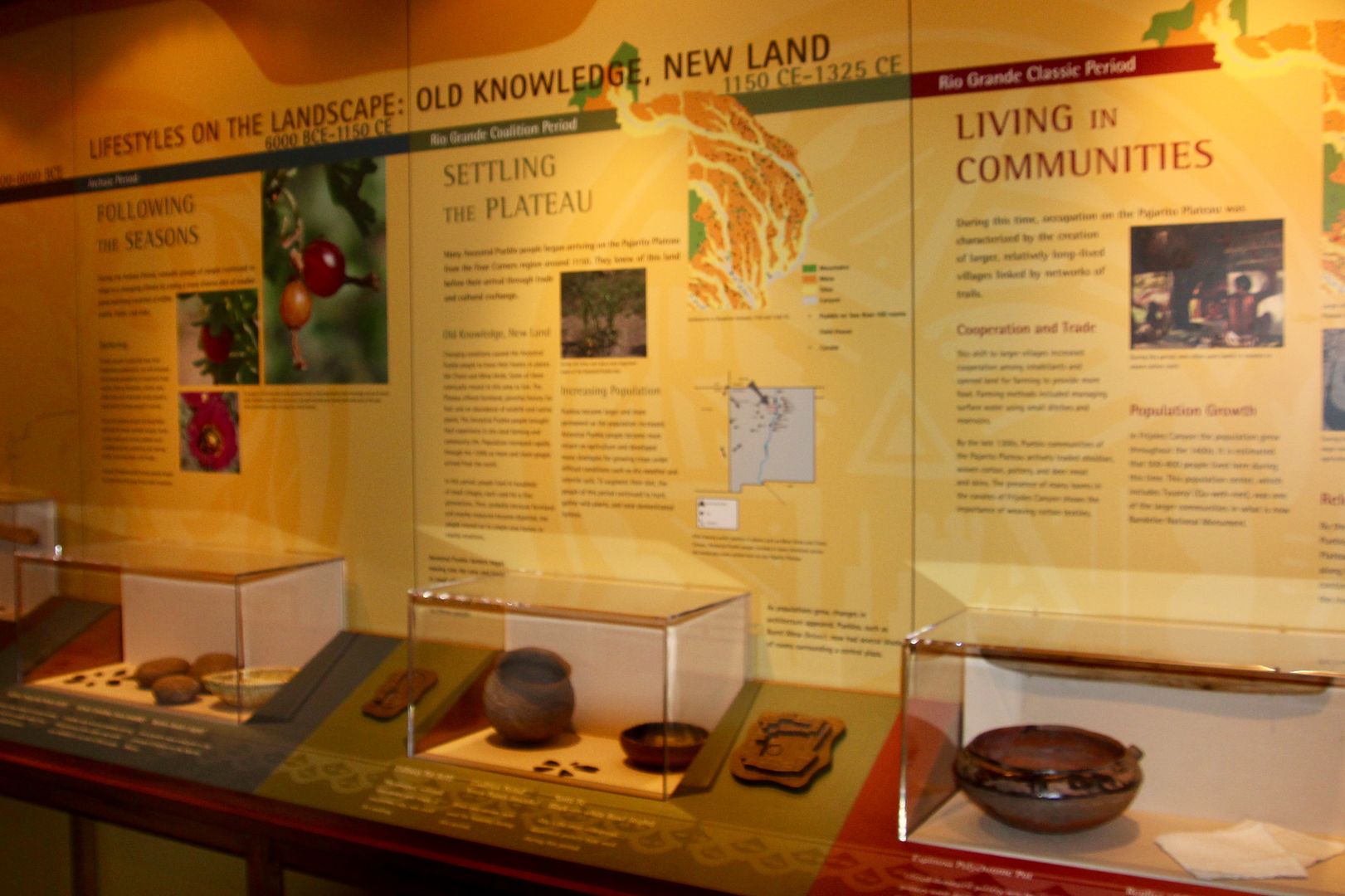
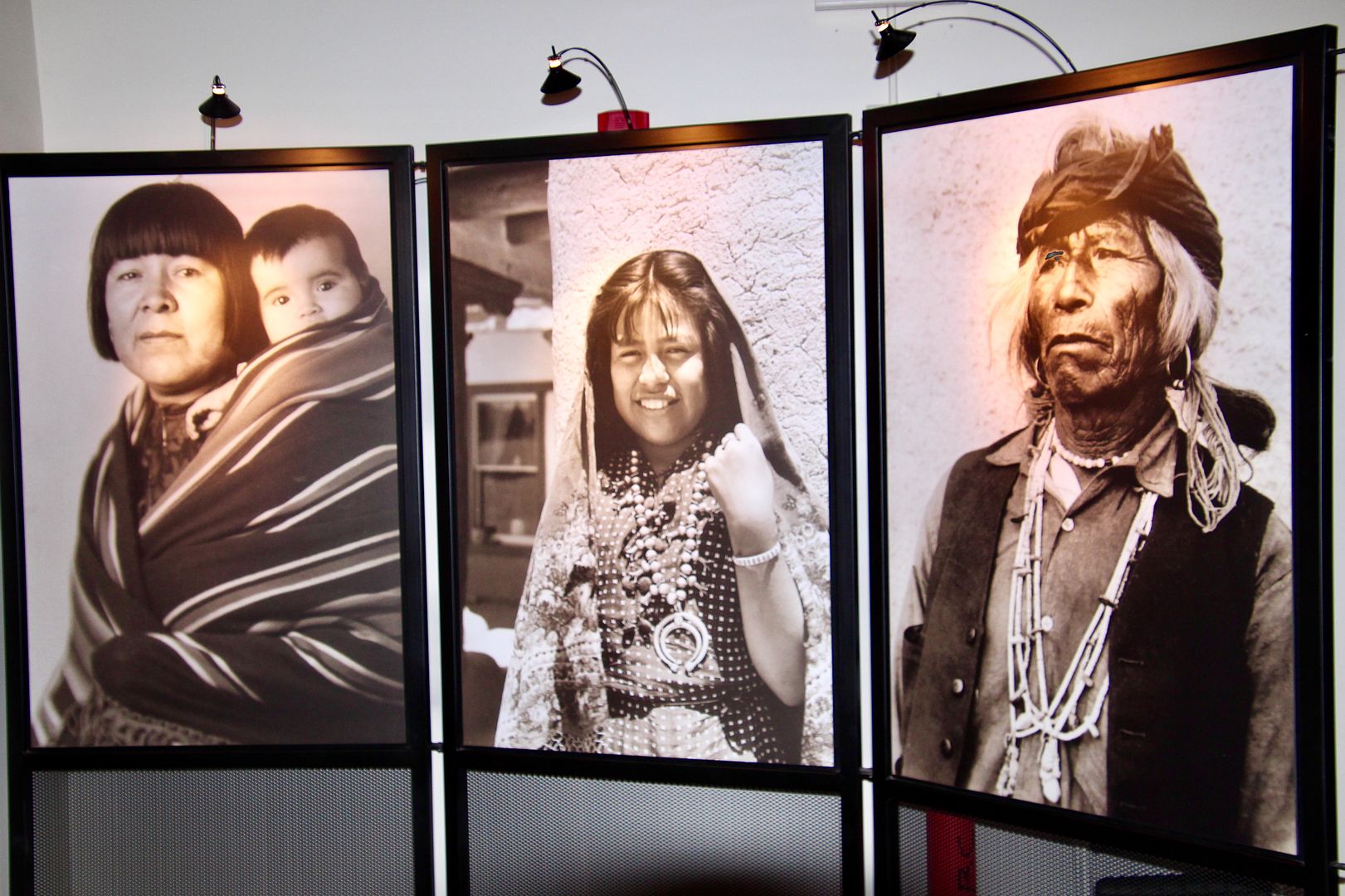
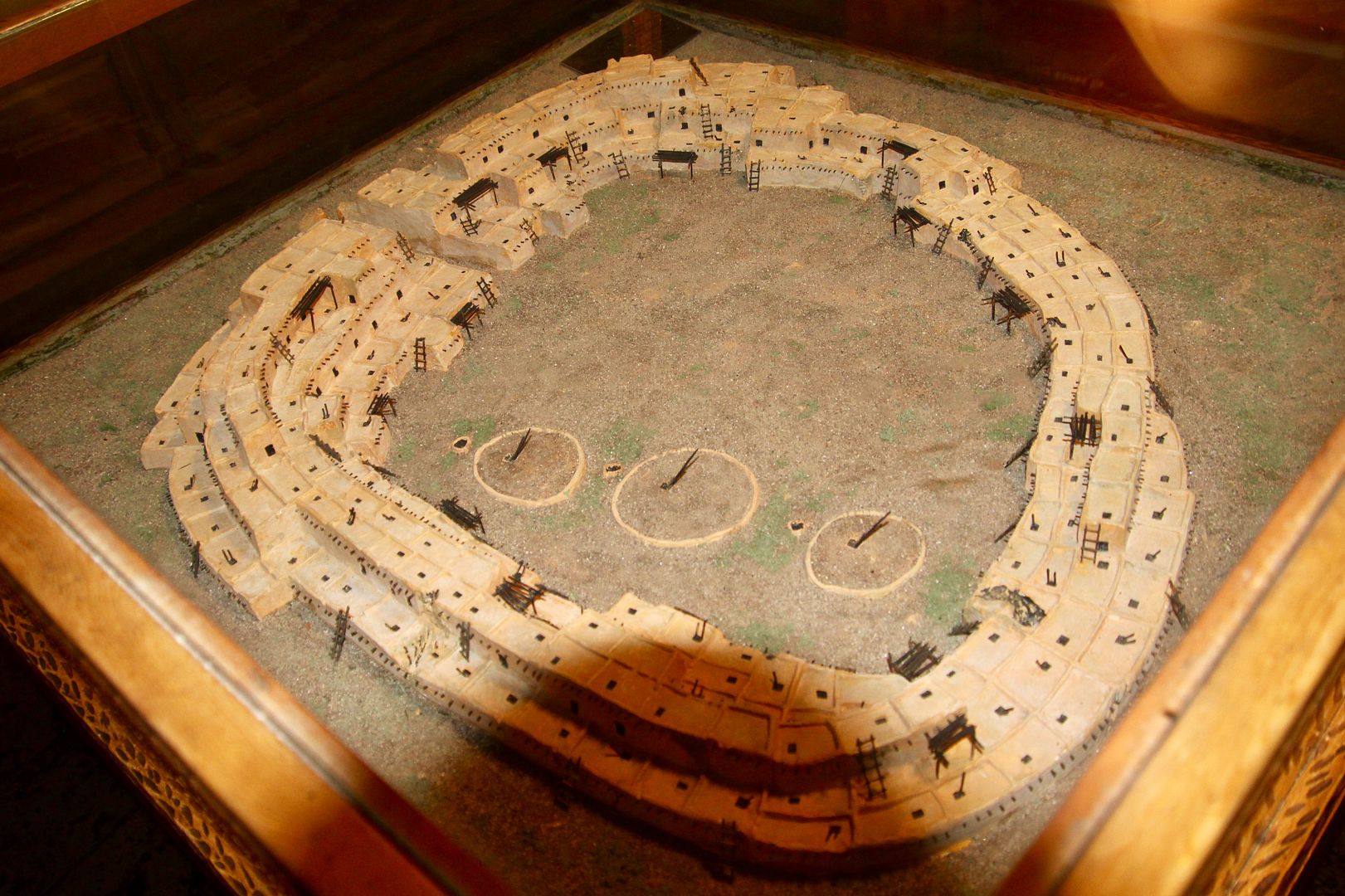
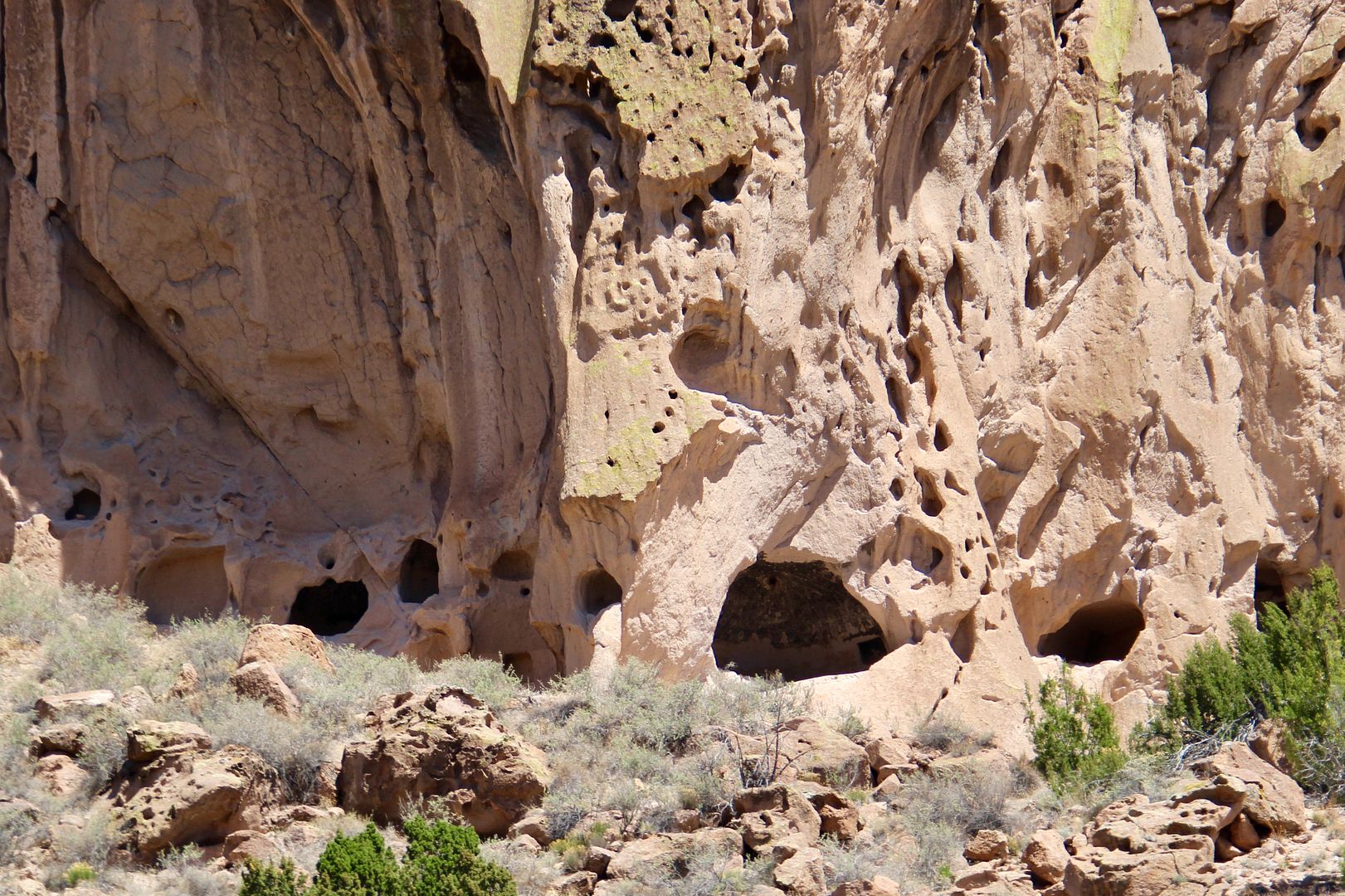



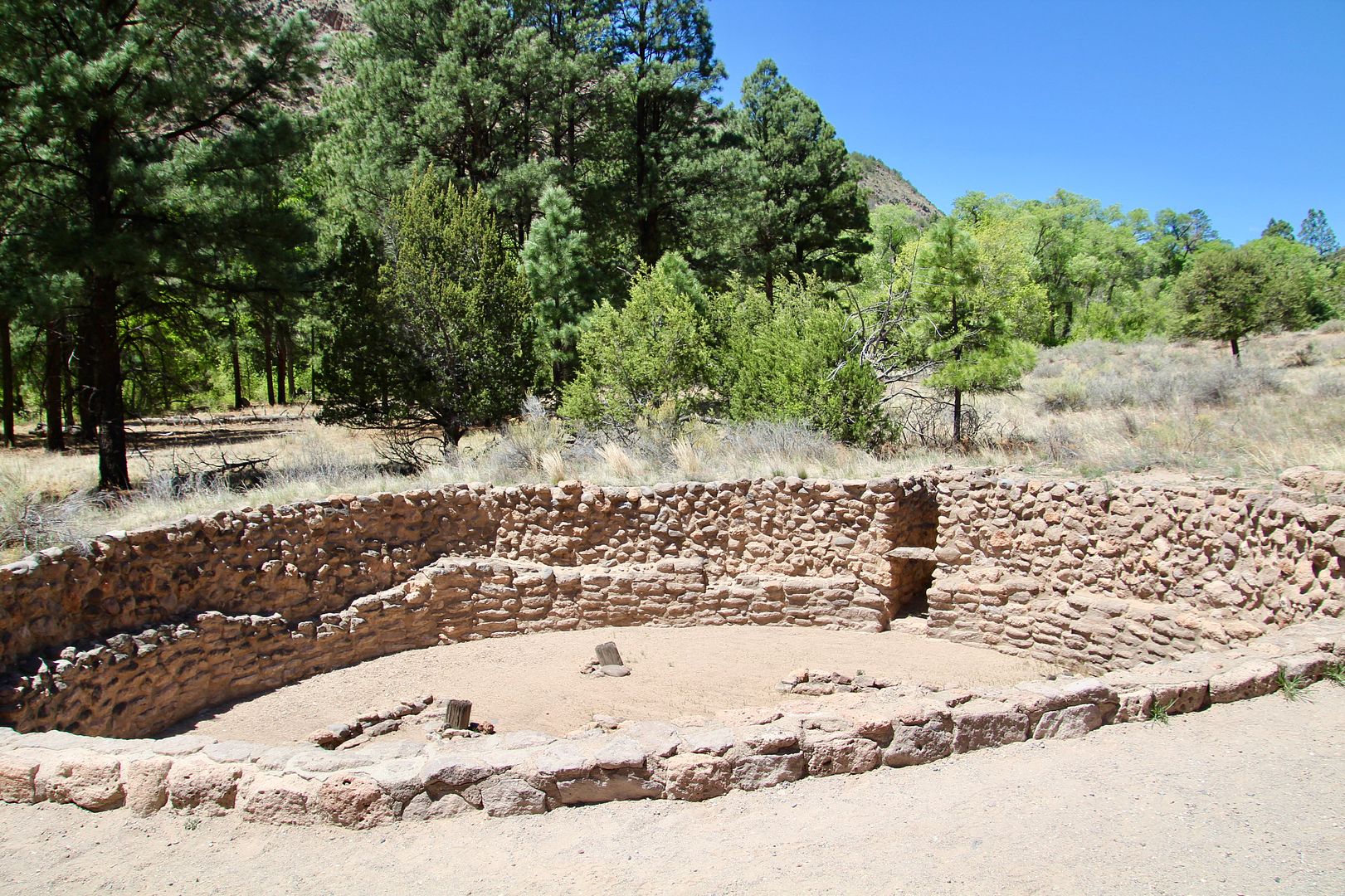
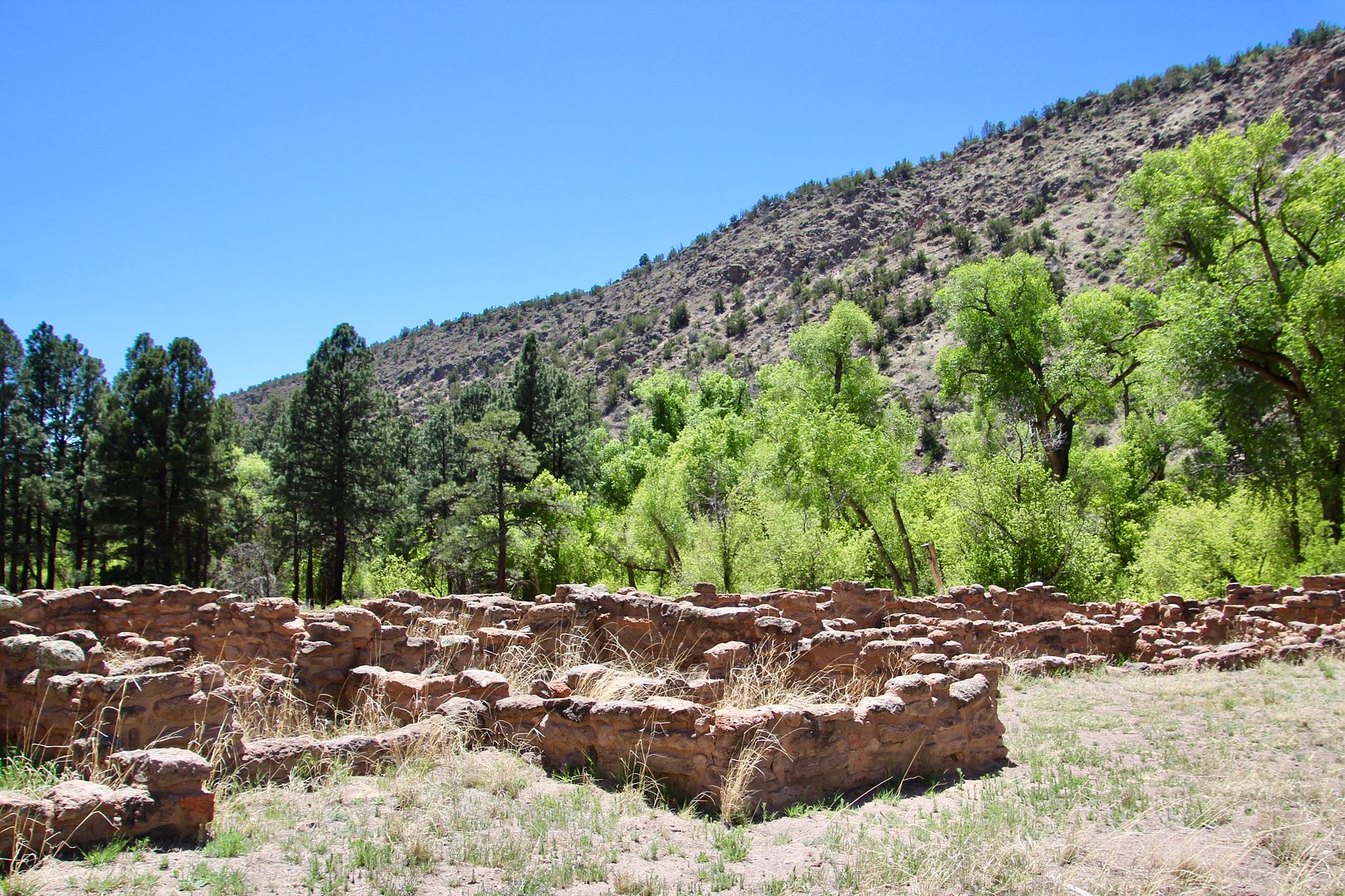
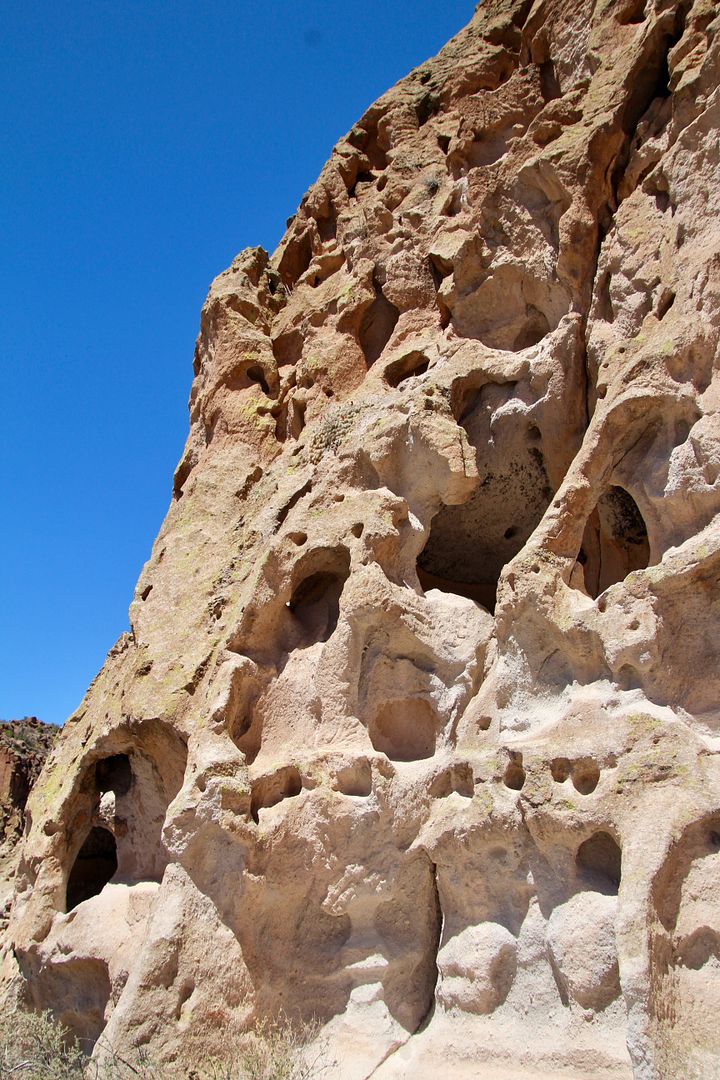
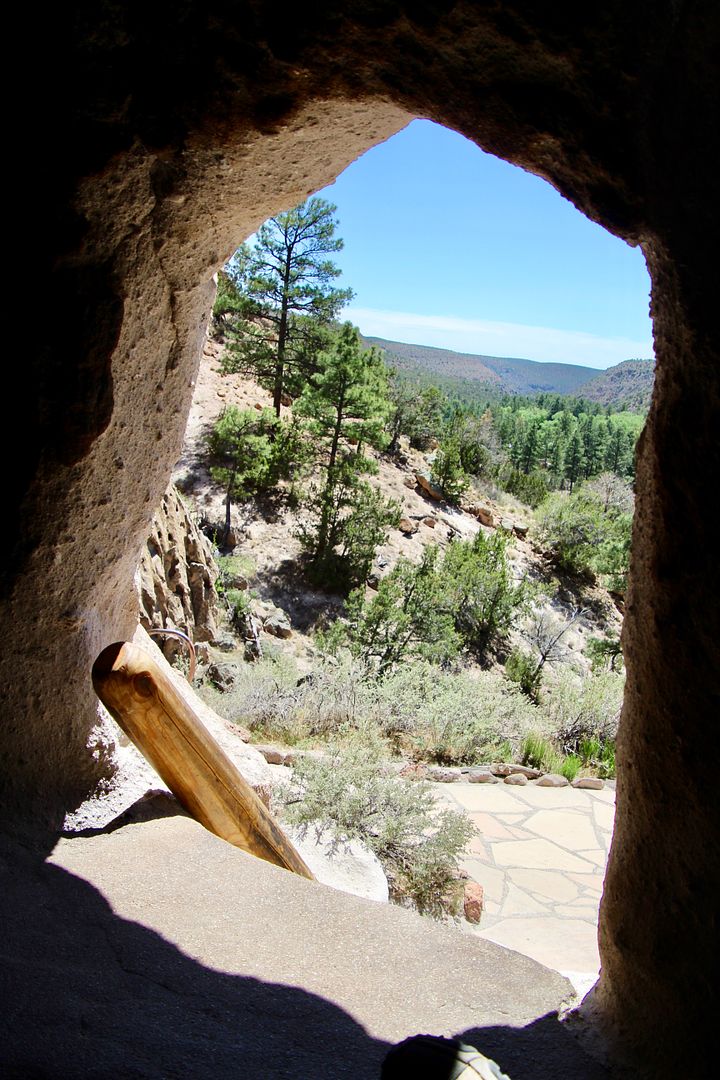
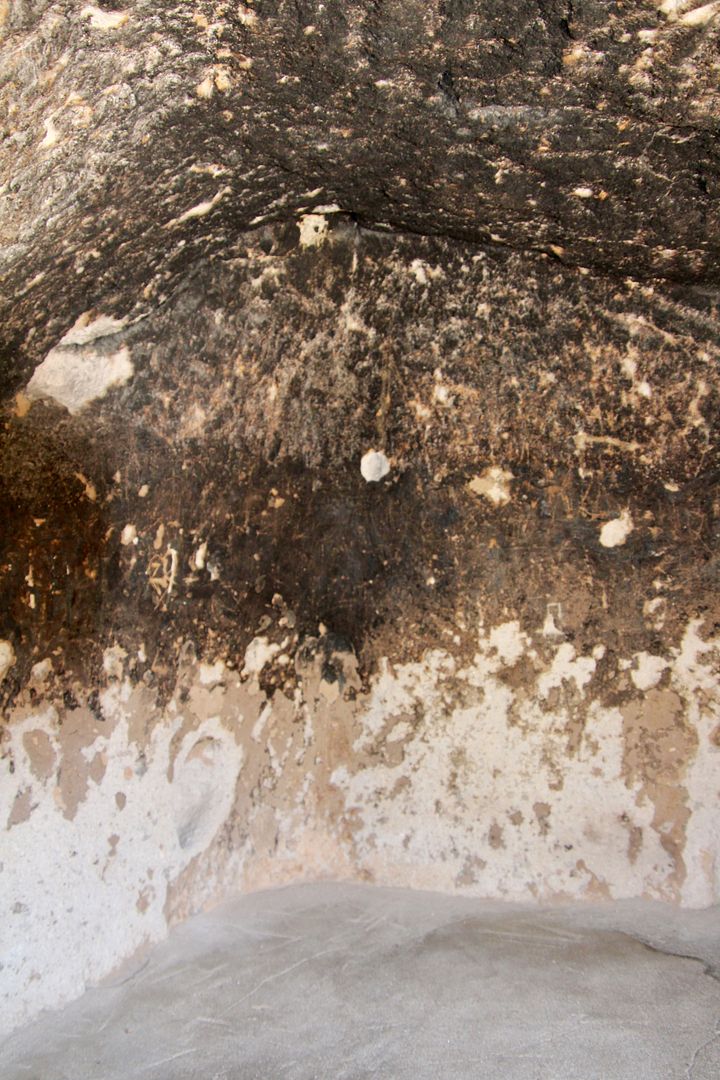


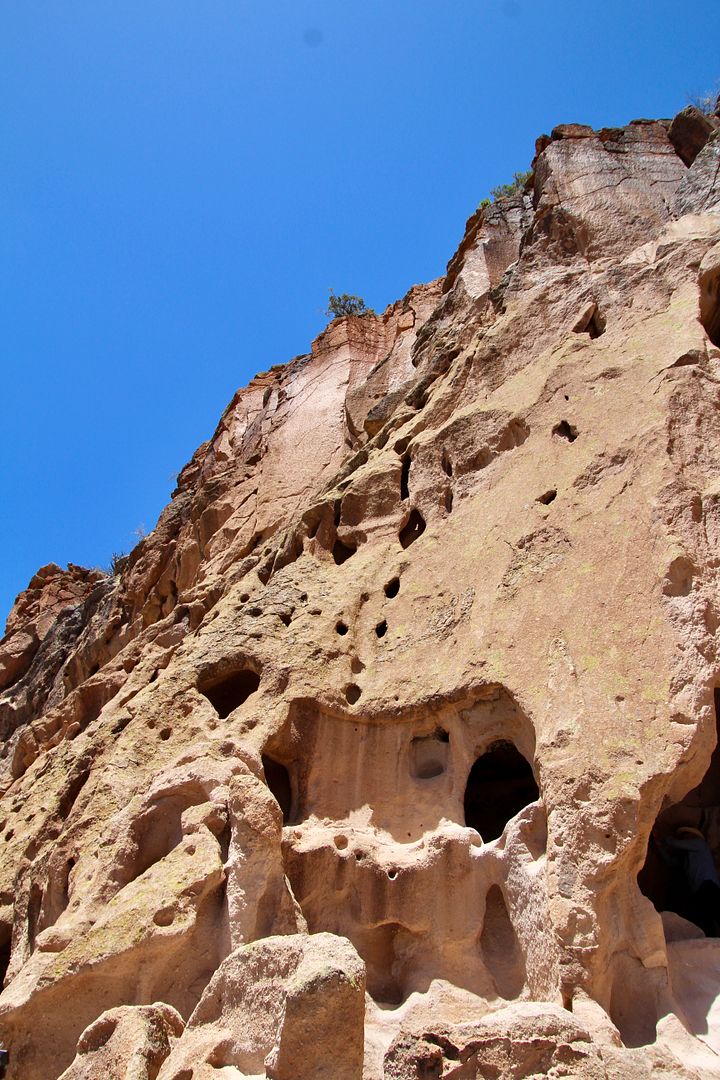
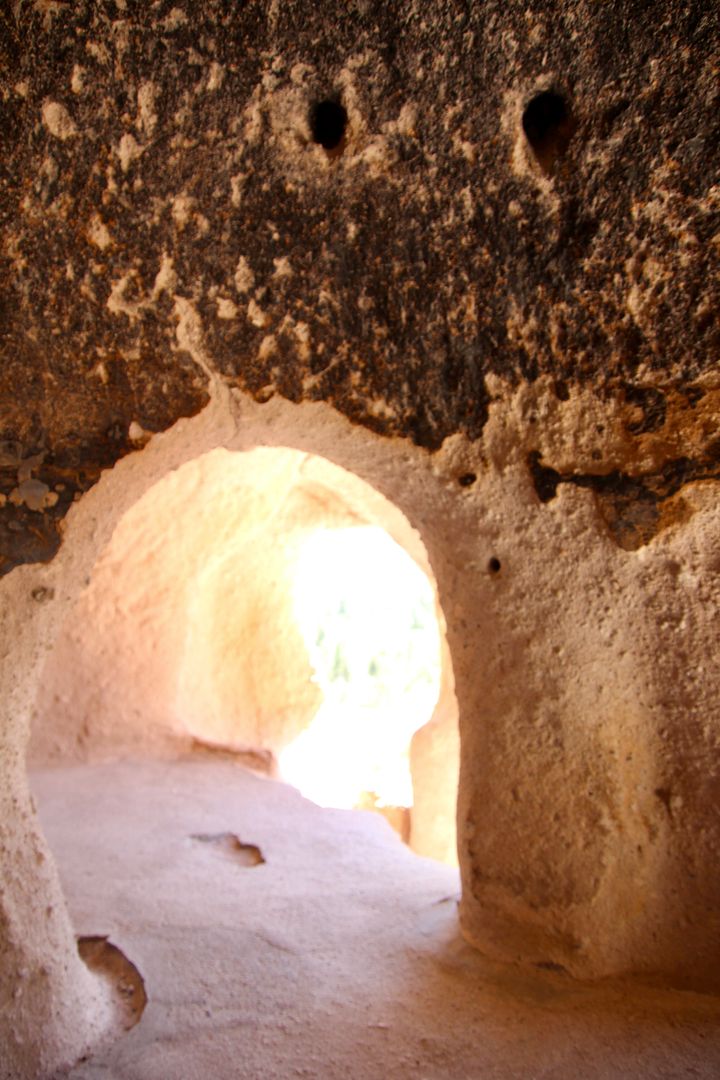
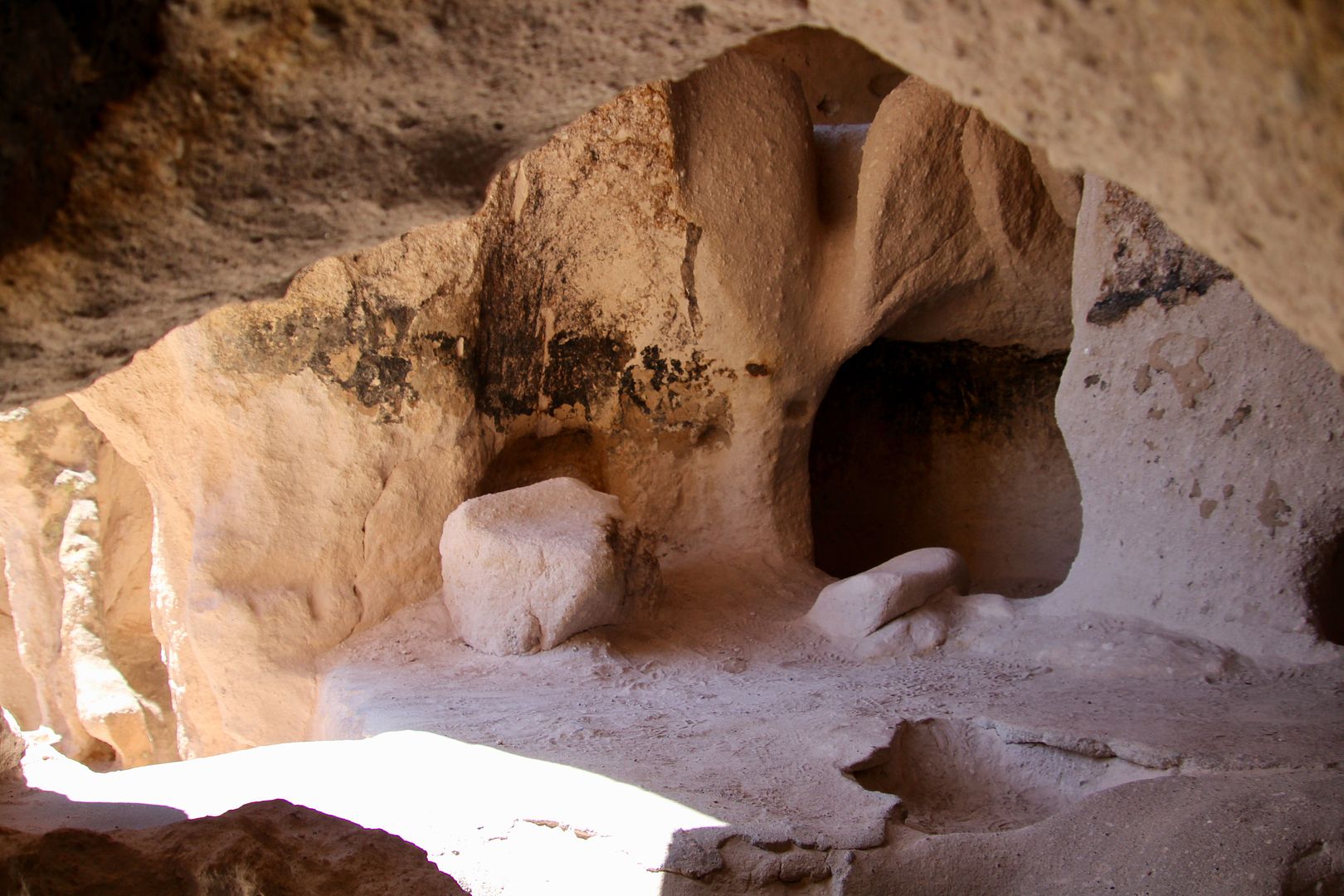


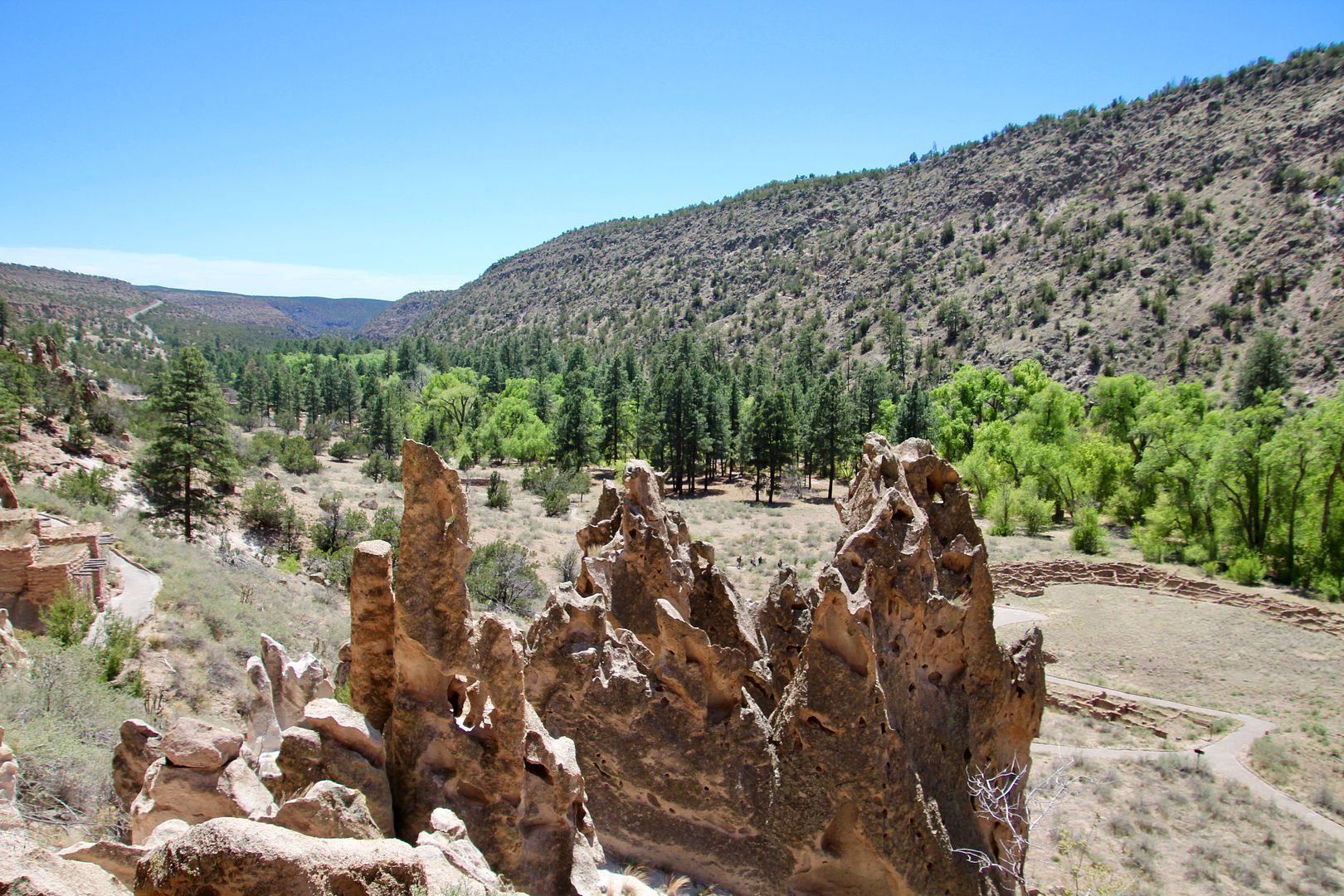
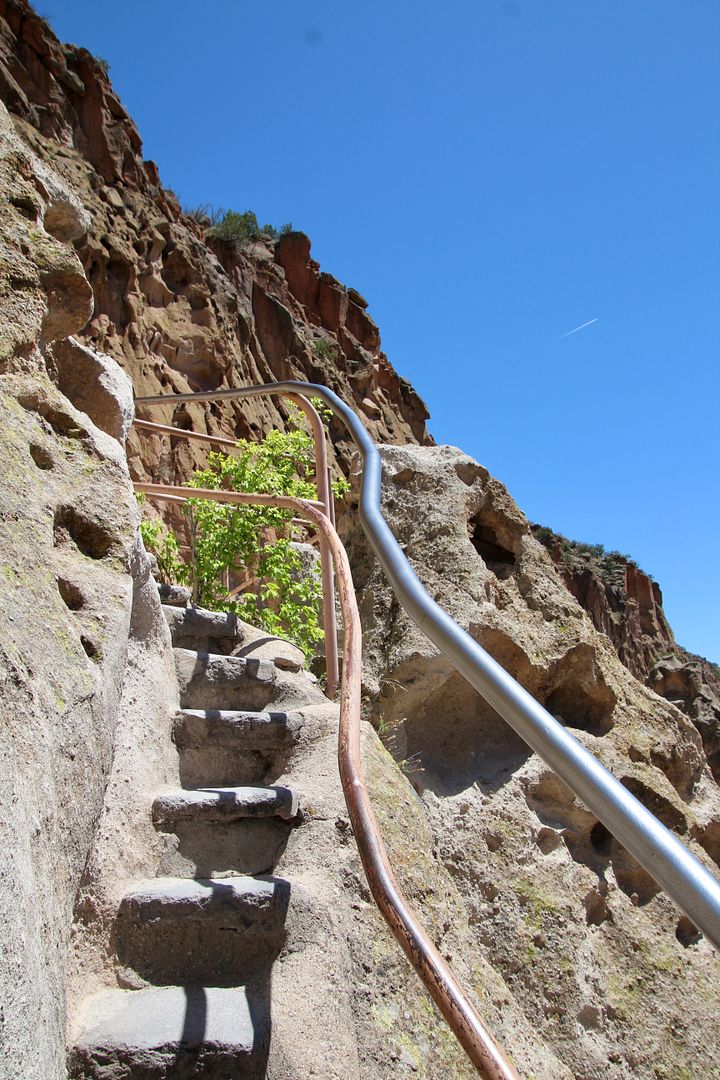


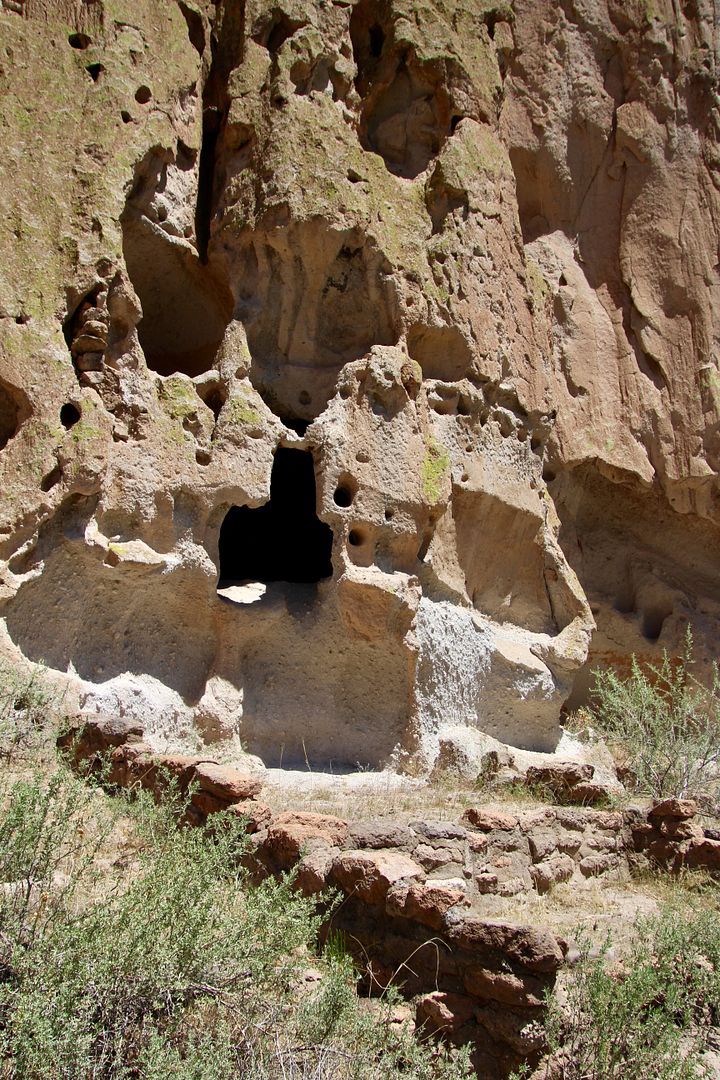
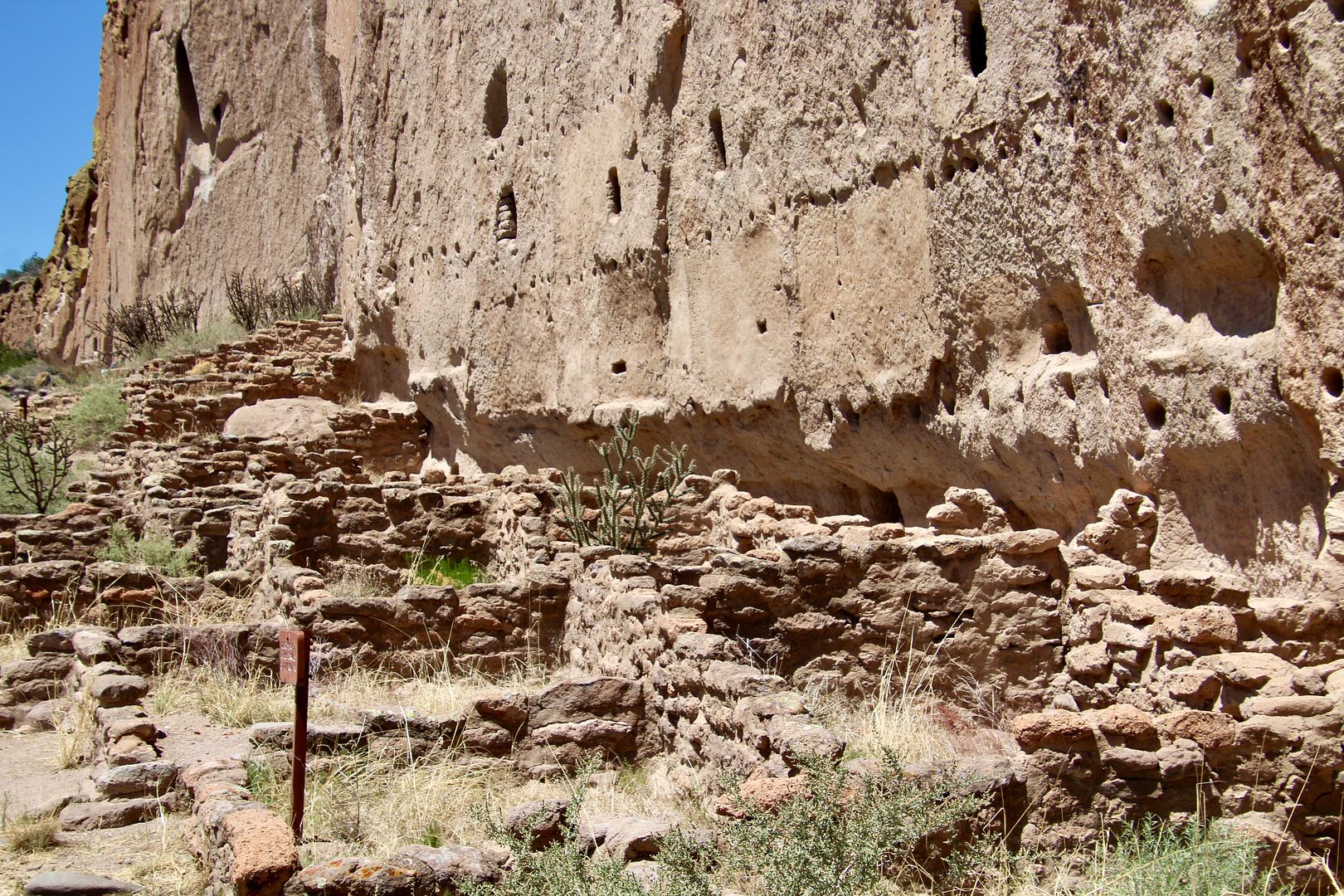
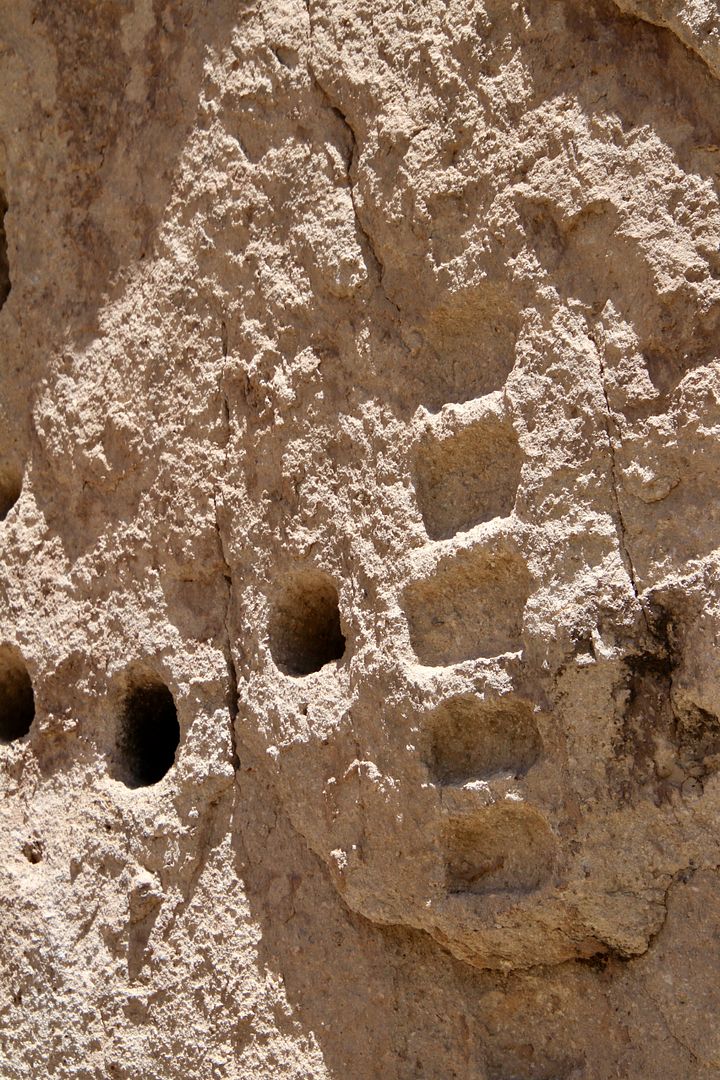
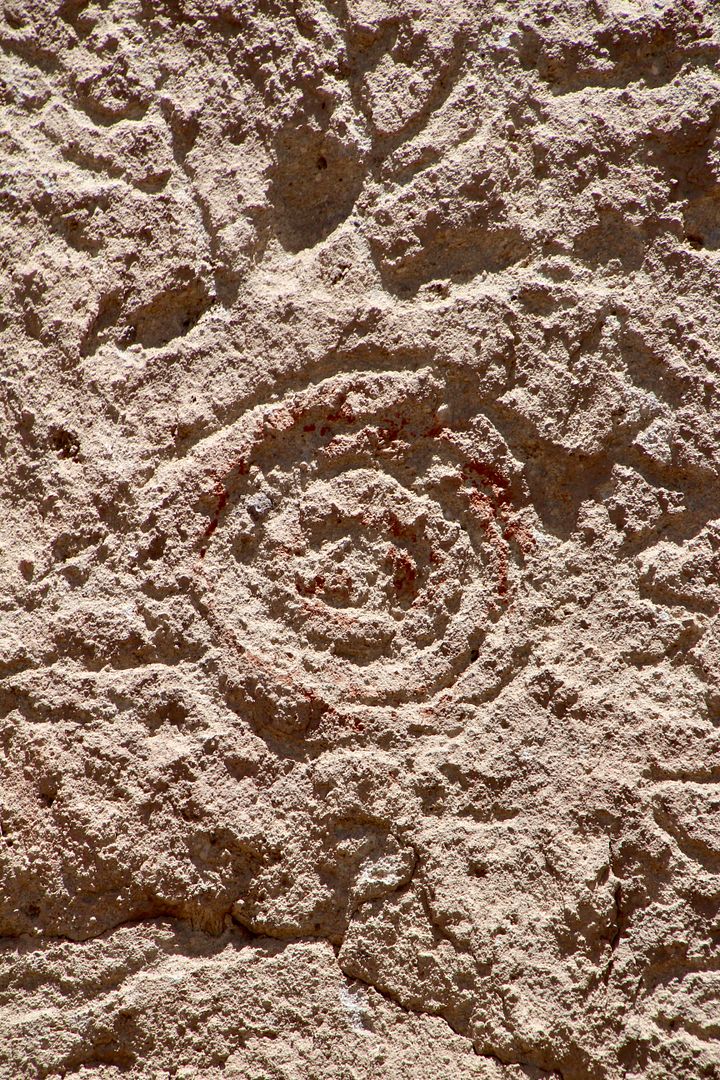
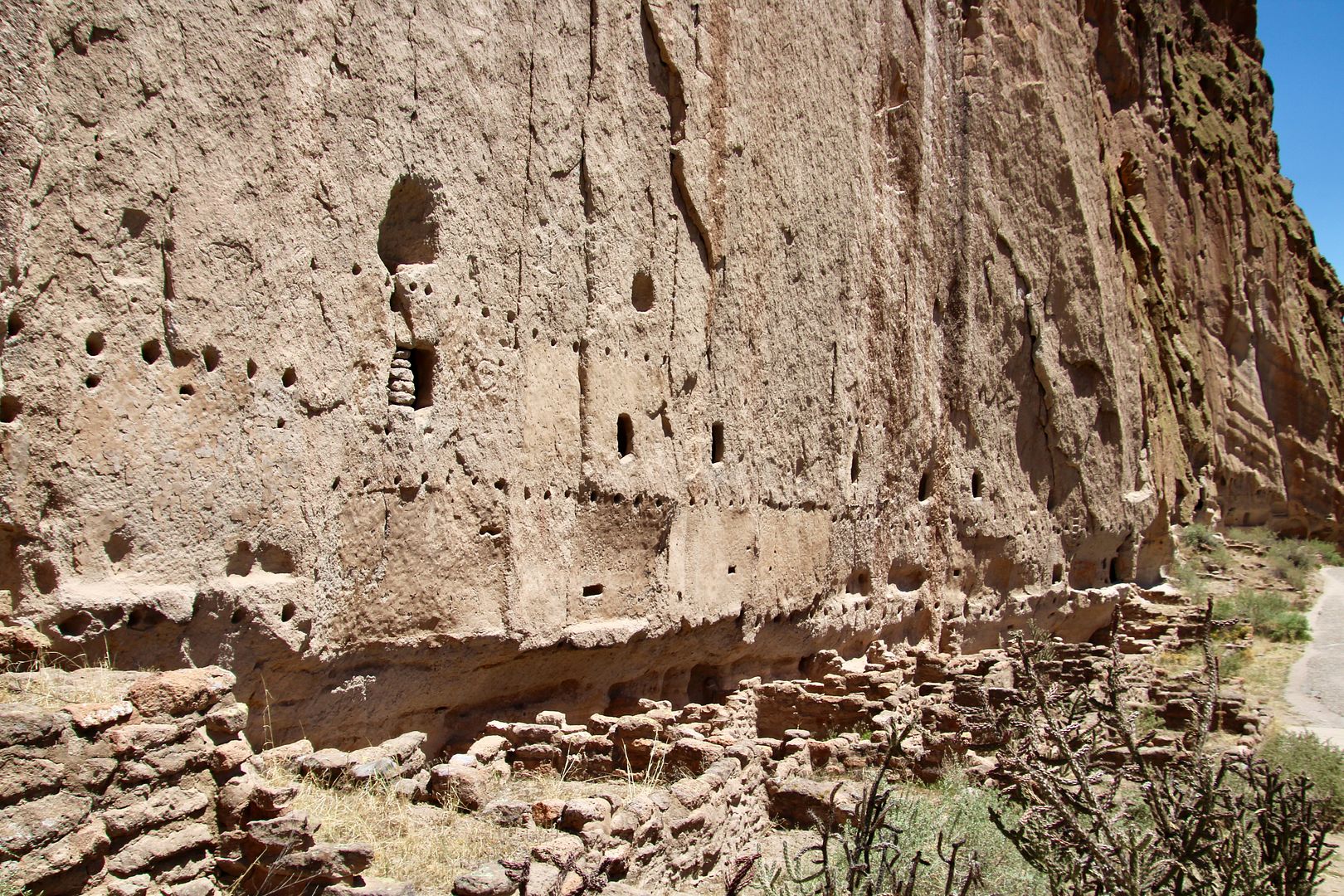
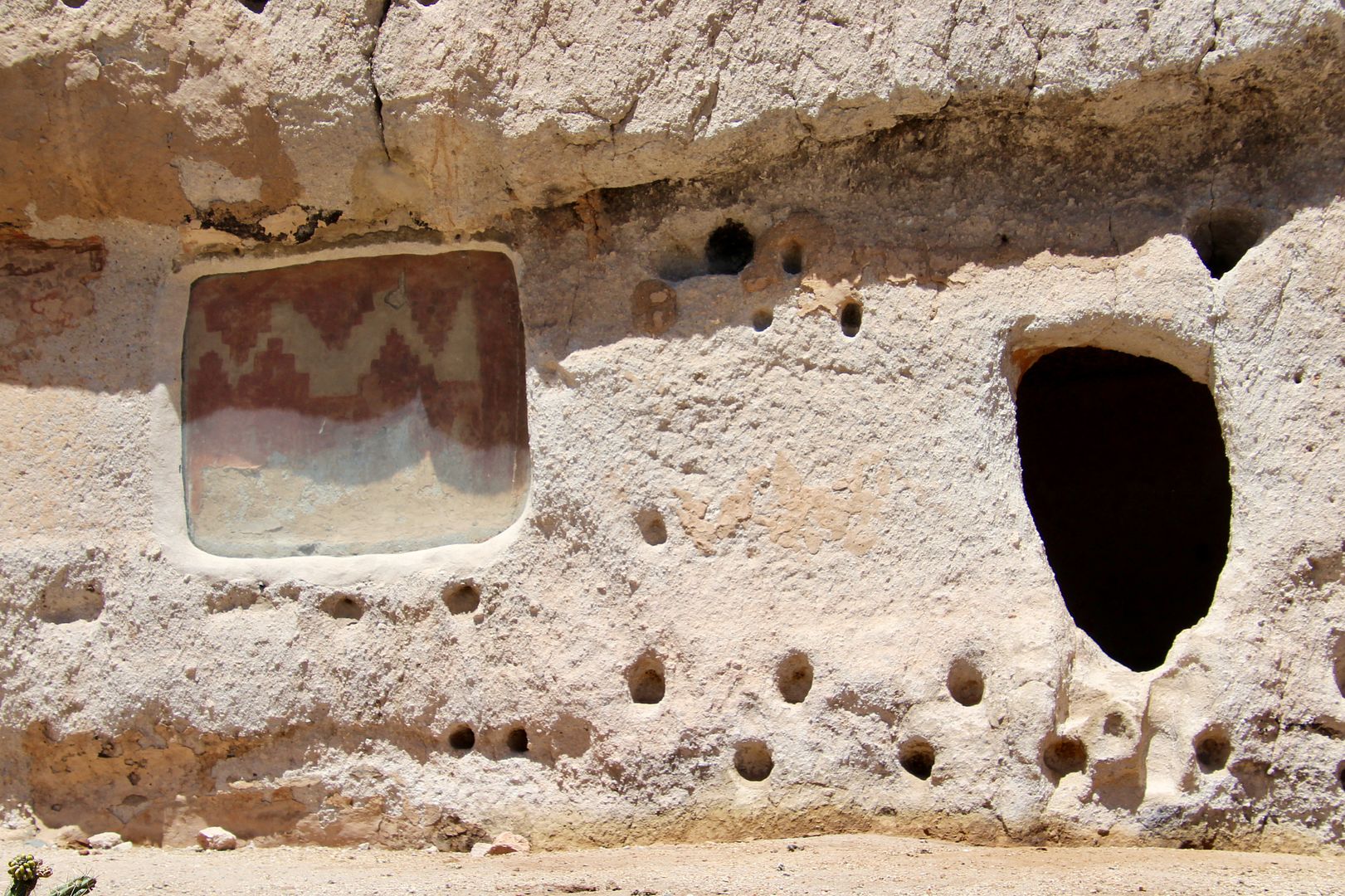

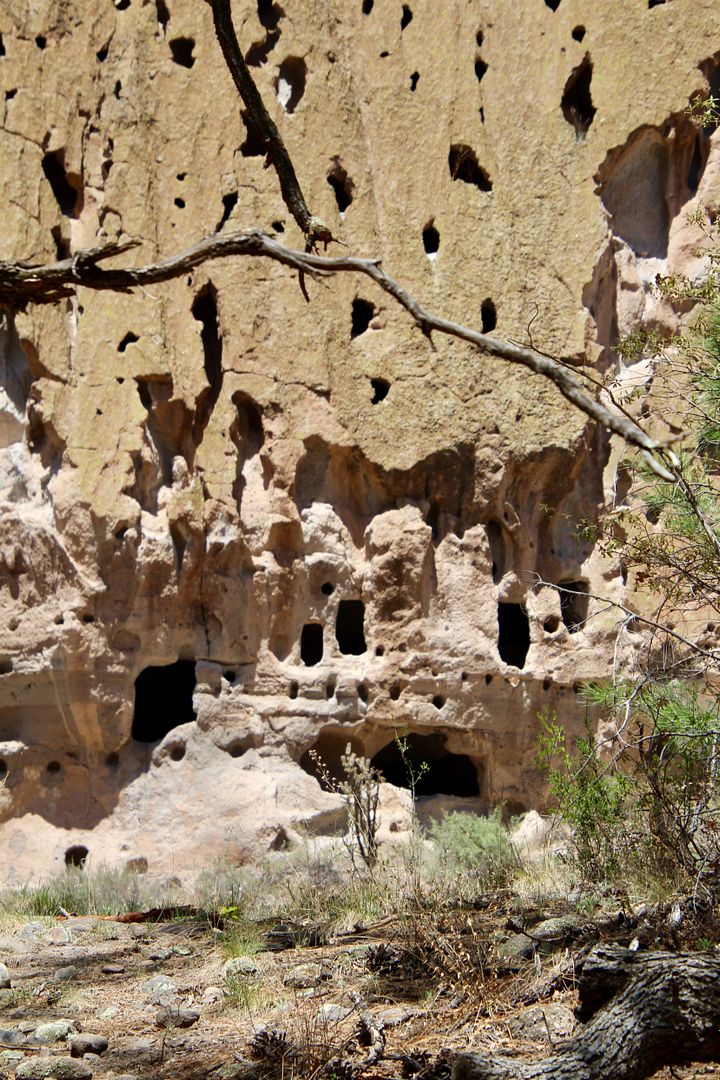
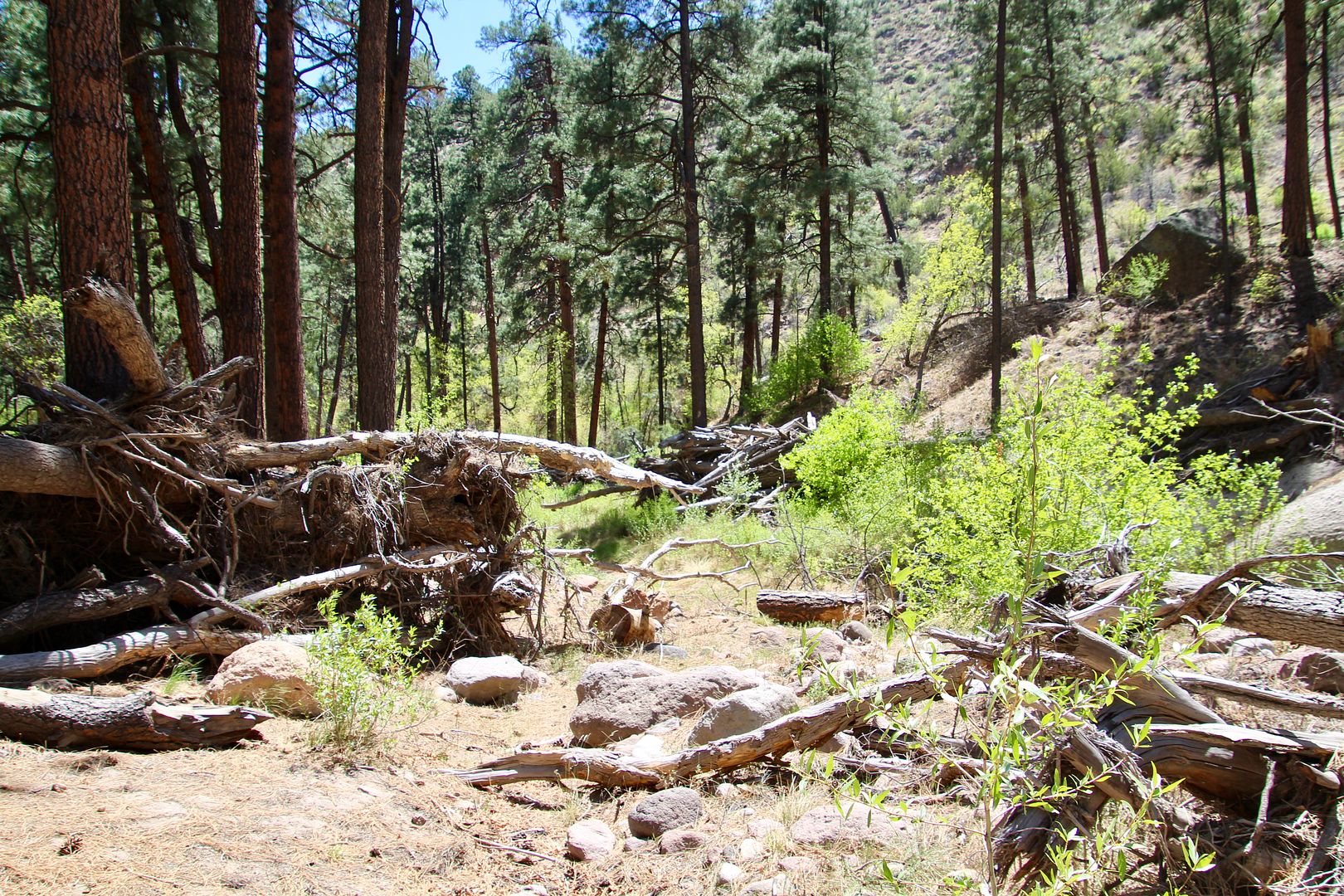
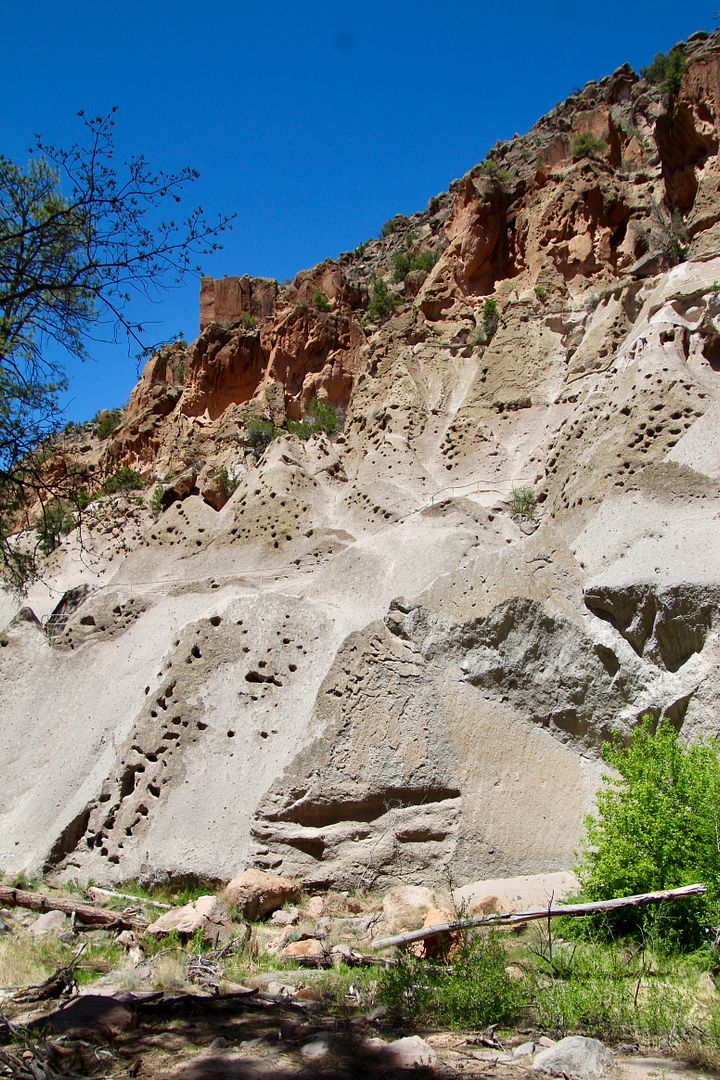
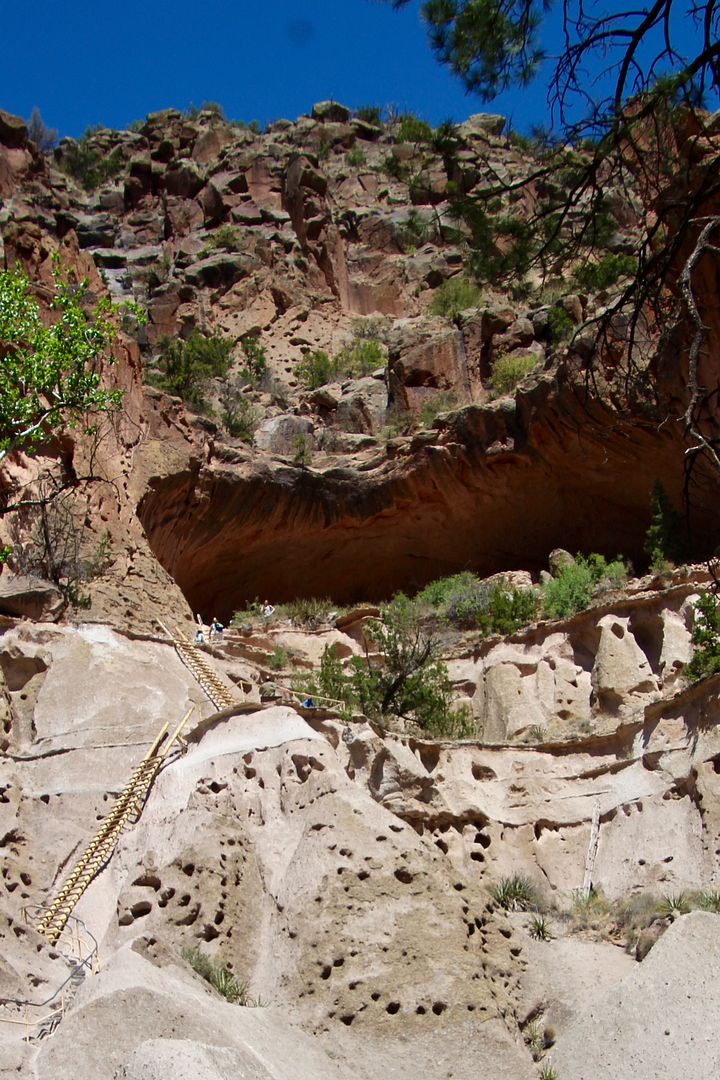


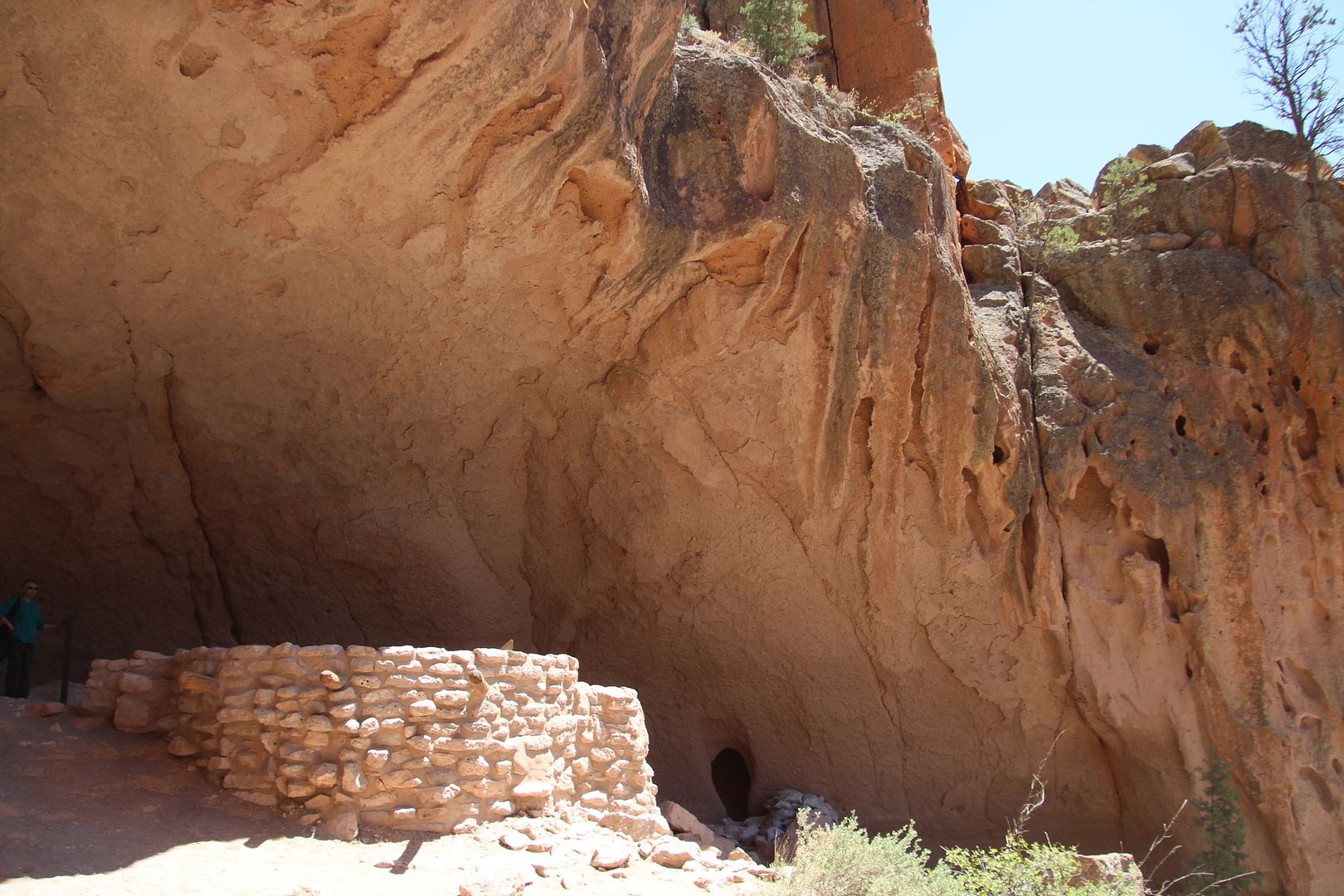
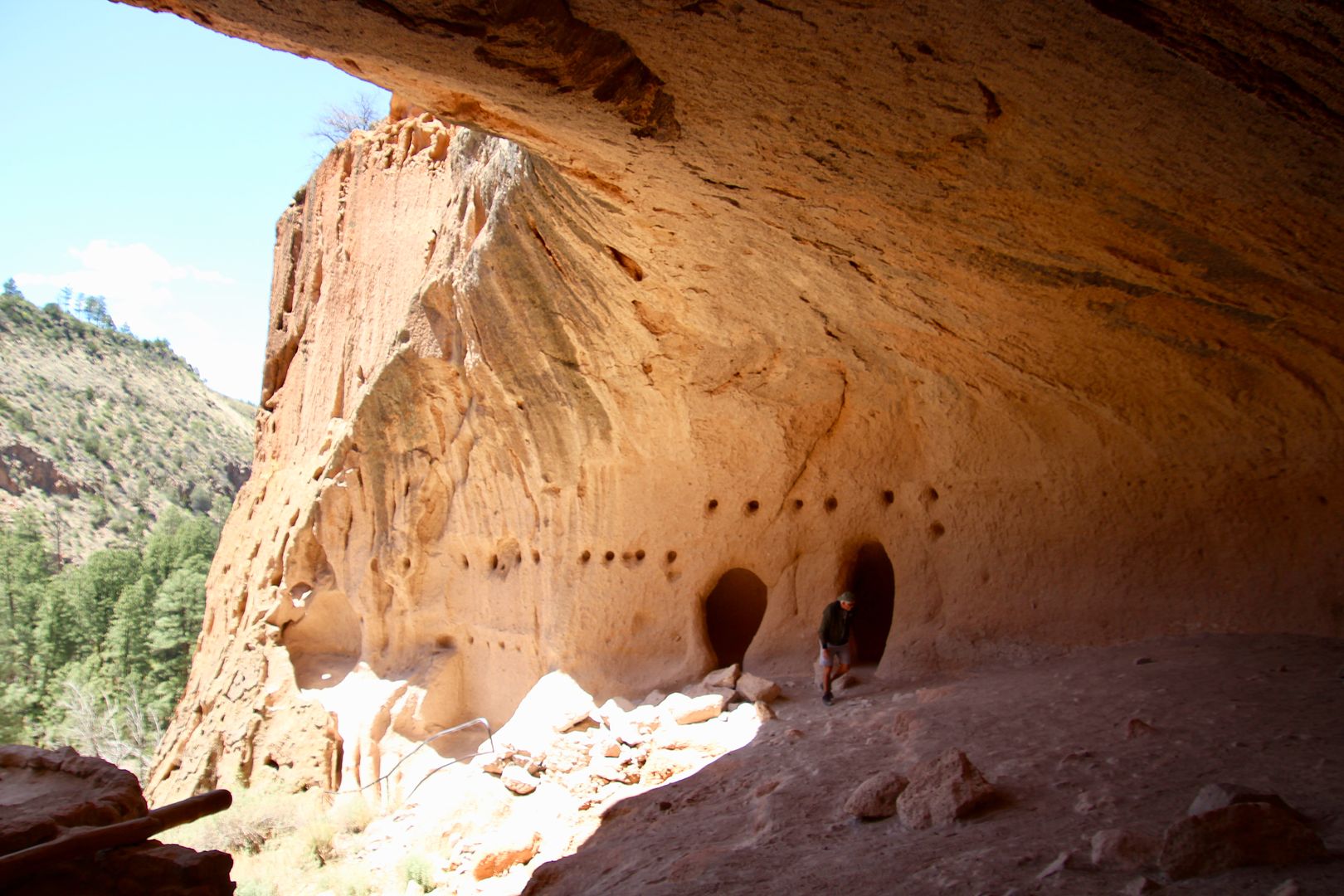
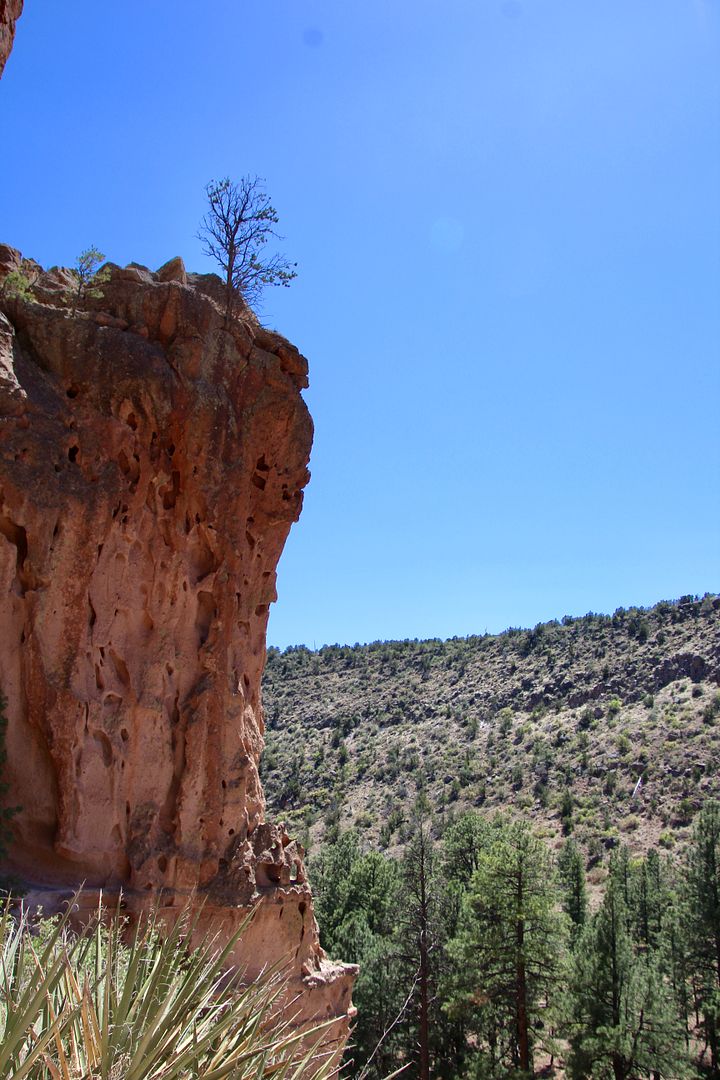
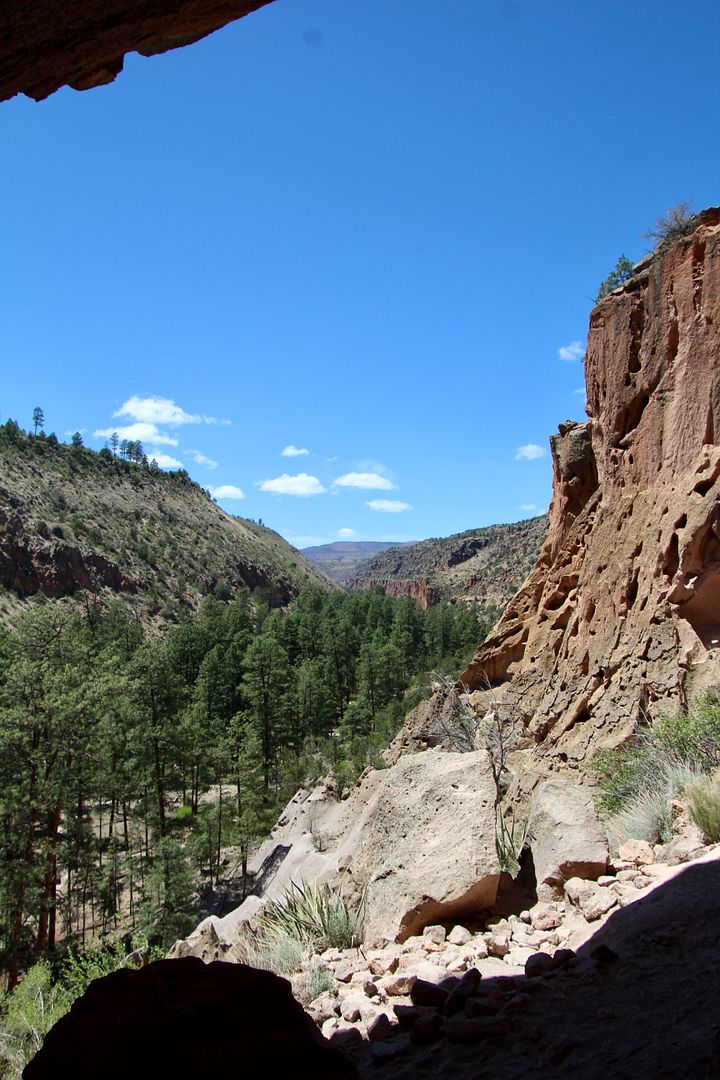
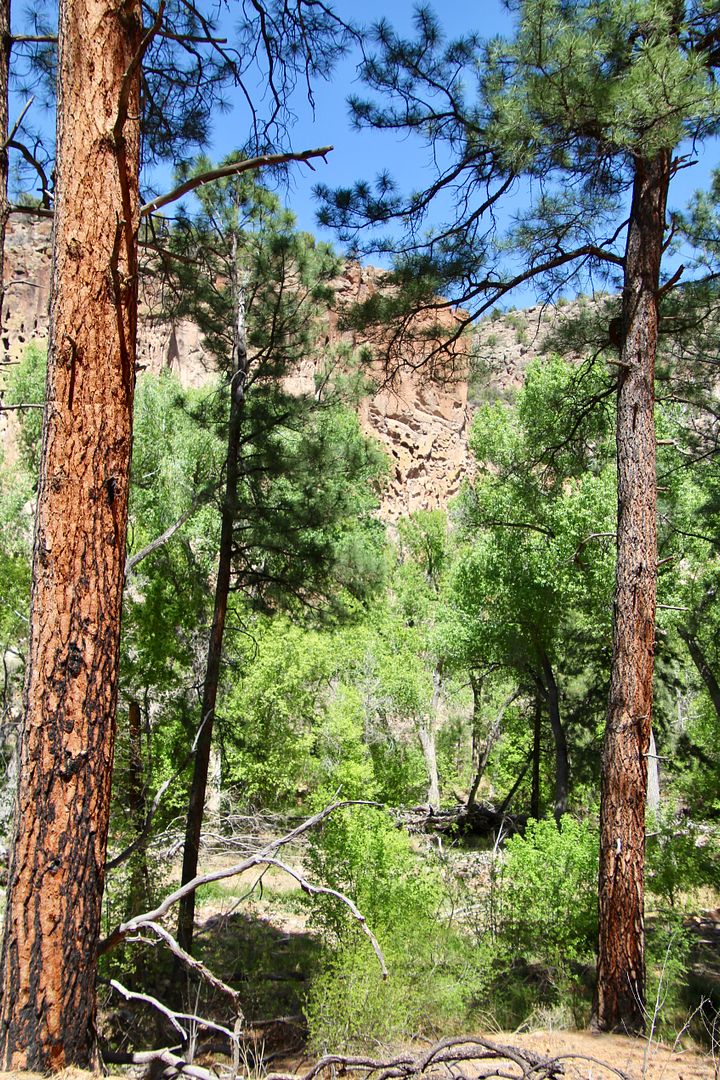

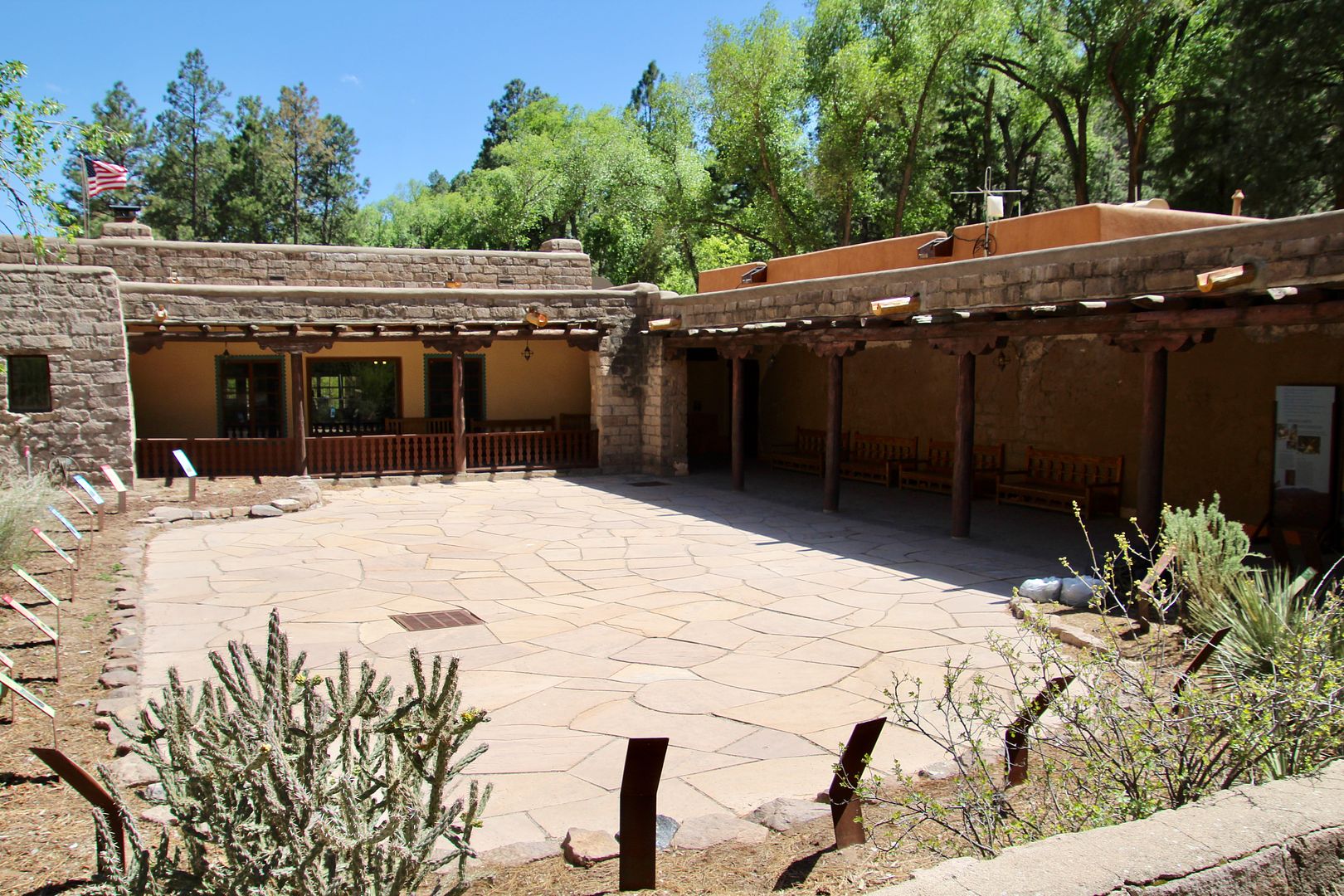
No comments:
Post a Comment